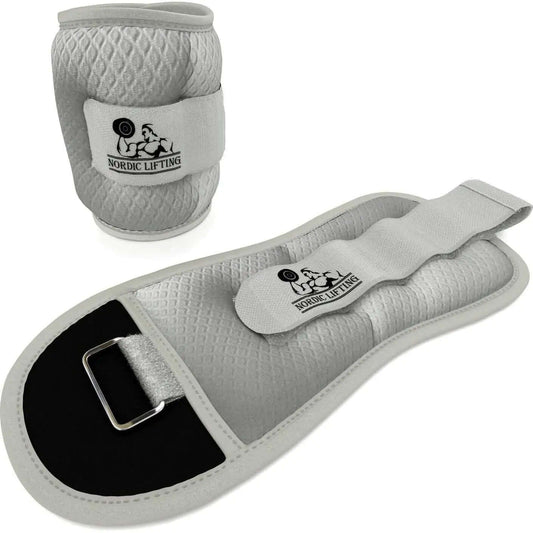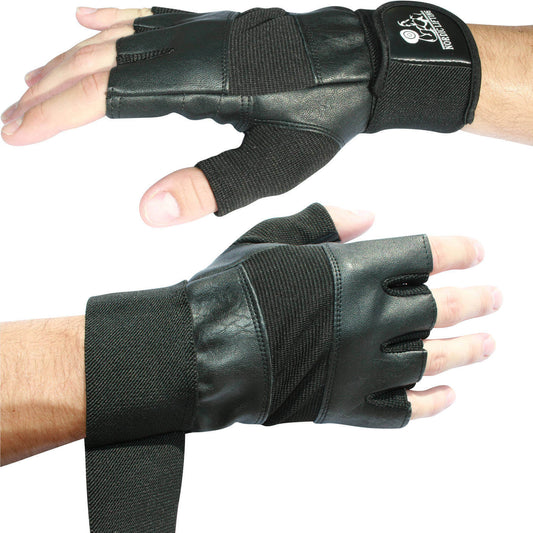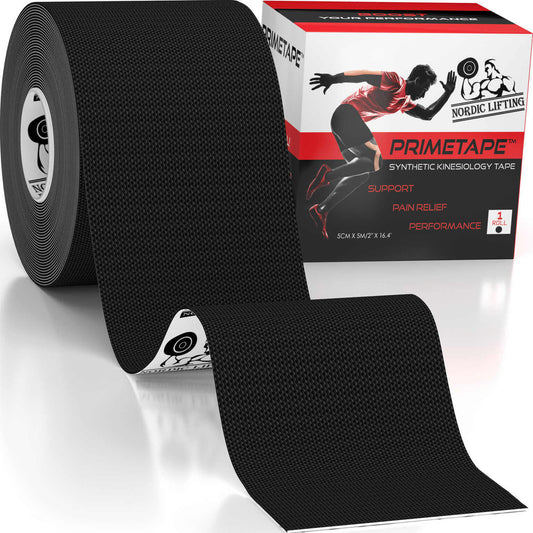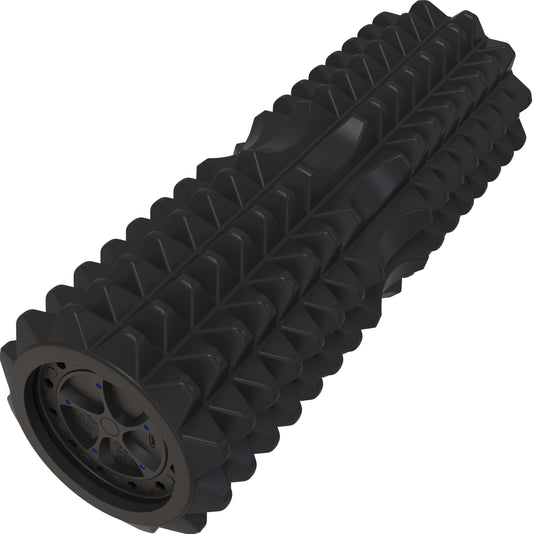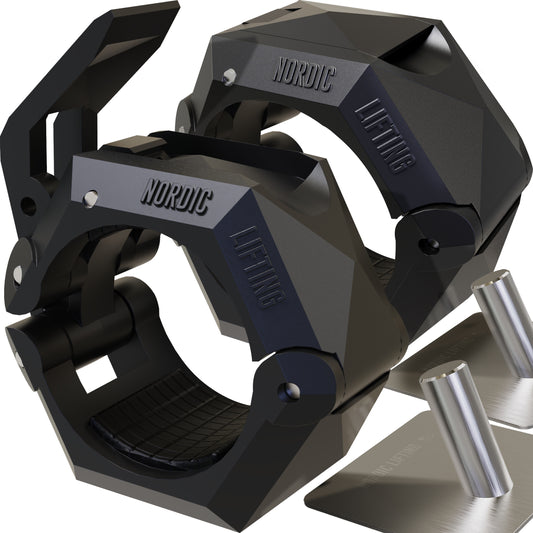Last Updated: April 16, 2025
Many athletes experience discomfort when using the hook grip during lifts. Understanding the right techniques and preventive measures can significantly reduce that pain. This blog post will explore various methods to ease hook grip pain, ensuring athletes can perform effectively without the nagging discomfort.
From proper hand placement to using supportive gear, every detail matters in mastering the hook grip. Athletes can enhance their grip strength and minimize potential pain through specific exercises and techniques. This article aims to provide practical solutions for anyone struggling with hook grip discomfort.
Key Takeaways
- Proper technique can significantly reduce hook grip pain.
- Strengthening the hands can enhance grip performance.
- Using supportive equipment helps in pain management.
Understanding Hook Grip
The hook grip is a popular technique used in weightlifting that provides stability and increased grip strength. Recognizing how this grip works, along with the common sources of pain associated with its use, can enhance lifting performance and comfort.
Physiology Behind Hook Grip
The hook grip involves placing the thumb under the fingers, which wraps around the barbell. This grip creates a strong connection between the lifter's hand and the bar. When using this technique, the thumb serves as a brace, which helps to distribute weight and reduce reliance on finger strength alone.
This grip aids in creating internal rotation in the lifter's hand and forearm, enhancing power transfer to the bar. Engaging multiple muscles in the forearm and shoulder during lift also increases stability. The hook grip can allow for a greater range of motion, vital for effective lifts. However, the initial pressure can sometimes cause discomfort until the lifter becomes accustomed to the technique.
Common Causes of Pain in Hook Grip
Pain when using the hook grip can arise from several factors. First, improper technique may lead to excessive strain on the thumbs and wrists. Often, beginners grip the bar too tightly, which increases discomfort.
Another common issue is the lack of conditioning. New lifters may not have built sufficient strength in their hands and forearms to handle the demands of a hook grip. Using the grip without adequate preparation can result in strains or other injuries.
To alleviate this pain, lifters can gradually increase the weight they lift while using the hook grip. Incorporating mobility exercises for the wrists, fingers, and forearms can improve flexibility and reduce discomfort.
Proper Technique and Fundamentals
Using the hook grip correctly is essential for reducing pain and maximizing performance in weightlifting. Understanding the fundamentals of grip technique, thumb placement, and finger length are crucial for both comfort and strength.
Mastering Grip Technique
The hook grip involves wrapping the thumb around the bar and pinching it with the fingers. To master this technique, start by placing the thumb underneath the bar before wrapping the fingers over it. This creates a secure hold.
Practicing with lighter weights allows for better technique development without straining the hands. Gradually increase the weight as comfort improves.
It's important to maintain a neutral wrist position during lifts. This reduces unnecessary pressure on the thumb and decreases the risk of injury.
Optimizing Thumb Placement
The placement of the thumb is crucial to reducing discomfort. The thumb should lie flat against the bar without excessive squeezing. It should be positioned so that the fingers can pull it tightly around the bar. This positioning helps distribute the load evenly.
Some lifters find relief by applying flexible athletic tape over their thumbs. This can minimize friction and enhance grip security.
Experimenting with thumb placement—whether closer to the fingers or farther away—can help find the most comfortable position for each individual.
Finger Length Considerations
Finger length can impact how effectively the hook grip is used. Those with longer fingers may find it easier to create a secure hold on the bar. However, this does not mean shorter fingers cannot effectively use the hook grip.
Individuals with shorter fingers may need to adjust their grip slightly or focus more on their thumb placement to ensure a secure hold.
Practicing different grips can help find the ideal setup for each lifter, allowing them to maximize strength while minimizing pain. Using a hook grip is highly effective when done properly, regardless of finger length.
Enhancing Grip Strength
Improving grip strength is key to reducing hook grip pain. Focusing on specific exercises and allowing proper rest can lead to better performance and less discomfort. The following sections detail effective strength training exercises and the importance of rest and recovery.
Strength Training Exercises
To build grip strength, certain exercises should be prioritized. These include:
- Dead Hangs: Hang from a pull-up bar for 20-30 seconds to improve grip endurance.
- Farmers Walks: Carry heavy weights in each hand while walking for distance or time. This boosts overall grip and forearm strength.
- Wrist Curls: Perform wrist curls using a barbell or dumbbell to target the wrist flexors directly.
Incorporating these movements into a regular workout routine can significantly increase grip power. They target various muscles and promote coordination in the arms and hands.
Role of Rest and Recovery
Rest is essential for muscle growth and preventing injury. After intense grip-strengthening workouts, the muscles need time to recover. A few points to consider include:
- Active Recovery: Engage in light activities to maintain blood circulation while allowing muscles to repair.
- Scheduled Rest Days: Dedicate specific days solely for recovery. This prevents burnout and promotes gradual strength improvements.
Adequate rest also helps reduce the risk of chronic pain associated with overuse during hook grip exercises. Balancing training with proper recovery can optimize grip strength.
Preventive Measures and Protective Gear
Using preventive measures and appropriate protective gear is essential to reduce hook grip pain. By understanding the importance of athletic tape and selecting the right gloves, lifters can enhance comfort and performance while protecting their thumbs.
Importance of Using Athletic Tape
Athletic tape can be a game changer for those using the hook grip. Proper use of tape not only supports the thumb but also helps to prevent pain during lifts.
When applying tape, it's vital to use a taping technique that provides both compression and support. This includes:
-
Clean and Prep: Begin with clean, dry skin for better adhesion.
-
Wrap Technique: Start by wrapping the base of the thumb and then extend the tape around it. Overlapping the tape slightly can offer extra stability.
-
Secure Ends: Make sure the ends of the tape are secured to prevent peeling during lifting.
Using thumb tape can create a cushion around the sensitive areas, reducing friction and discomfort. Many athletes find that this simple measure can enhance their lifting experience.
Selecting the Right Type of Gloves
Choosing the right gloves is another crucial step in preventing hook grip pain. Gloves designed for weightlifting often include features that enhance grip and support.
Key considerations when selecting gloves include:
-
Fit: Gloves should fit snugly, allowing for freedom of movement without excess material.
-
Material: Look for gloves made of breathable materials. This can help prevent sweat accumulation and maintain comfort.
-
Grip Texture: Gloves with textured palms can enhance grip on the bar, reducing the chance of slipping.
-
Padding: Some gloves have additional padding in the thumb area. This extra cushion can help absorb pressure.
Ultimately, the right gloves help improve performance while keeping pain at bay. Investing in quality gloves tailored for weightlifting needs can significantly benefit anyone who regularly uses the hook grip.
Pain Management and Treatment
Effective management of hook grip pain involves immediate actions to relieve discomfort and long-term strategies for ongoing prevention. These methods help athletes maintain performance while minimizing the risk of further injury.
Immediate Actions for Relieving Pain
When someone experiences hook grip pain, the first step is to rest the affected area. This allows any existing sprains or strains to heal. Taking a break from lifting can significantly reduce pain and prevent further injury.
Ice therapy is another crucial immediate action. Applying ice for 15-20 minutes can reduce swelling and numb the pain. It's recommended to use ice several times a day, especially after workouts.
Over-the-counter pain relievers like ibuprofen may help reduce discomfort temporarily. If the pain persists or worsens, consulting a healthcare professional is essential to evaluate potential injuries or the need for further treatment, including possible surgery.
Long-Term Strategies for Pain Reduction
To prevent future pain, proper grip technique is vital. Athletes should consider following a structured grip tutorial, which can enhance their form and reduce strain on the thumbs.
Incorporating strengthening exercises for the hands and wrists can also help create resilience against pain. Performing wrist curls or grip-strengthening exercises can build muscle and improve stability.
Regular stretching before and after workouts can enhance flexibility, reducing the risk of injury. Including these practices in a routine can lead to greater comfort when using the hook grip.
Finally, using specific gear like kinesiology tape or additional cushioning can add support. Proper wrapping techniques can also protect thumbs and provide stability, making lifting more comfortable.
Advanced Hook Grip Applications
The hook grip is an essential technique in weightlifting, especially for heavy lifts. Understanding its applications can help lifters maximize performance while minimizing discomfort. This section focuses on specific contexts to effectively use the hook grip.
Hook Grip in Weightlifting Movements
In competitive weightlifting, the hook grip is critical for exercises like the clean and jerk and the snatch. It provides a secure hold on the barbell, allowing lifters to maintain stability while moving heavy weights overhead.
When executing these movements, the thumb is wrapped around the bar, with the fingers gripping the thumb. This grip helps prevent the bar from slipping, especially during explosive lifts. The hook grip can also reduce the risk of injury by minimizing the strain on the biceps, which is a common concern in mixed grip techniques.
Applying Hook Grip to Deadlifts
The hook grip is quite beneficial for deadlifts, especially when lifting heavy weights. It stabilizes the grip and provides increased control during the lift. Lifters can achieve better pull strength and maintain proper form while reducing the risk of dropping the bar.
To utilize the hook grip for deadlifts, the lifter must position their hands outside the knees. The thumb should grasp the bar tightly and the fingers should wrap around the thumb. This method secures the grip, enabling more power transfer from the legs to the lift.
Variations and Alternatives to Hook Grip
While the hook grip is effective, some lifters may find it uncomfortable or painful. In such cases, alternative grips can be considered. The mixed grip, where one hand is pronated and the other is supinated, is a popular choice. This grip helps stabilize the lift but may increase the risk of bicep injury.
Other variations may include the use of straps for grip support. Straps can help lifters focus on form without worrying about grip failure during heavy lifts. It’s advisable to practice these alternatives to determine what feels best for individual lifting styles.
Accessory Equipment
Using the right accessory equipment can significantly reduce hook grip pain. Techniques like utilizing tacky substances and proper taping can enhance grip effectiveness while minimizing discomfort during lifts.
Utilizing Tacky Substances
Tacky substances, commonly found in sports like baseball and the Highland Games, can help improve grip and reduce pain. These substances create a better surface for gripping the bar, leading to less strain on the thumb.
Athletes often apply tacky directly to their hands. This enhances friction between the skin and the bar. By doing so, it allows for a more secure grip without overexerting the fingers and thumb. Using tacky can be particularly beneficial for heavy lifts where grip strength is crucial.
Users should ensure the tacky isn’t too thick. A proper amount creates a balance so that it enhances grip without making the bar feel slippery. Athletes should experiment with different products to find the right level of tackiness for their needs.
Effect of Taping on Performance
Taping techniques can also alleviate hook grip pain by providing additional support to the thumb. Properly applied tape can stabilize the thumb joint, reducing strain during lifts.
To tape correctly, start by wrapping the base of the thumb, allowing for a secure but flexible fit. This technique prevents excessive movement that may lead to pain. Many lifters prefer athletic tape for its durability and ease of use.
It's important to note that taping should not impair grip strength. Care must be taken to tape snugly without constricting blood flow. Lifters often report that effective taping can lead to improved comfort, enabling them to focus on their lifts without distraction.
Frequently Asked Questions
This section addresses common questions about reducing hook grip pain. It covers ways to alleviate discomfort, effective techniques for various lifts, and strategies for beginners to adapt to the grip.
How can one alleviate thumb joint pain resulting from the use of hook grip?
To reduce thumb joint pain, it is important to warm up properly before lifting. Stretching the hands and fingers can help increase flexibility. Additionally, using chalk can improve grip without adding excess pressure on the thumb joint.
What are effective strategies to reduce pain when using a hook grip for deadlifts?
Using a hook grip during deadlifts can be improved by focusing on building hand strength. Gradually increasing weight can help the body adapt to the grip. Taking breaks and allowing time for recovery is also essential.
Is it safe to consistently use hook grip in weightlifting, and what precautions should be taken?
Consistently using a hook grip is generally safe for weightlifting. Lifters should ensure that they are using proper form to avoid strain. Regularly checking for signs of injury and adjusting grip technique can help maintain safety.
What is the proper application of tape to minimize discomfort in hook grip?
To minimize discomfort, wrapping the thumb with kinesiology tape can provide support. It is important to apply the tape snugly but not too tight. Two layers of tape can offer added protection against calluses and blisters.
Can you provide examples of correct hook grip technique for various lifts?
For cleans, the lifter should wrap their fingers around the bar, placing the thumb underneath. In snatches, the hook grip should secure the bar with the fingers tightly wrapped. With deadlifts, the grip should be firm yet relaxed to prevent strain.
Are there any recommendations for building tolerance to hook grip discomfort, especially for beginners?
Beginners should start with lighter weights to get used to the hook grip. Practicing the grip without weight can also help develop familiarity. Gradually increasing the weight as comfort grows aids in building endurance for the grip.







